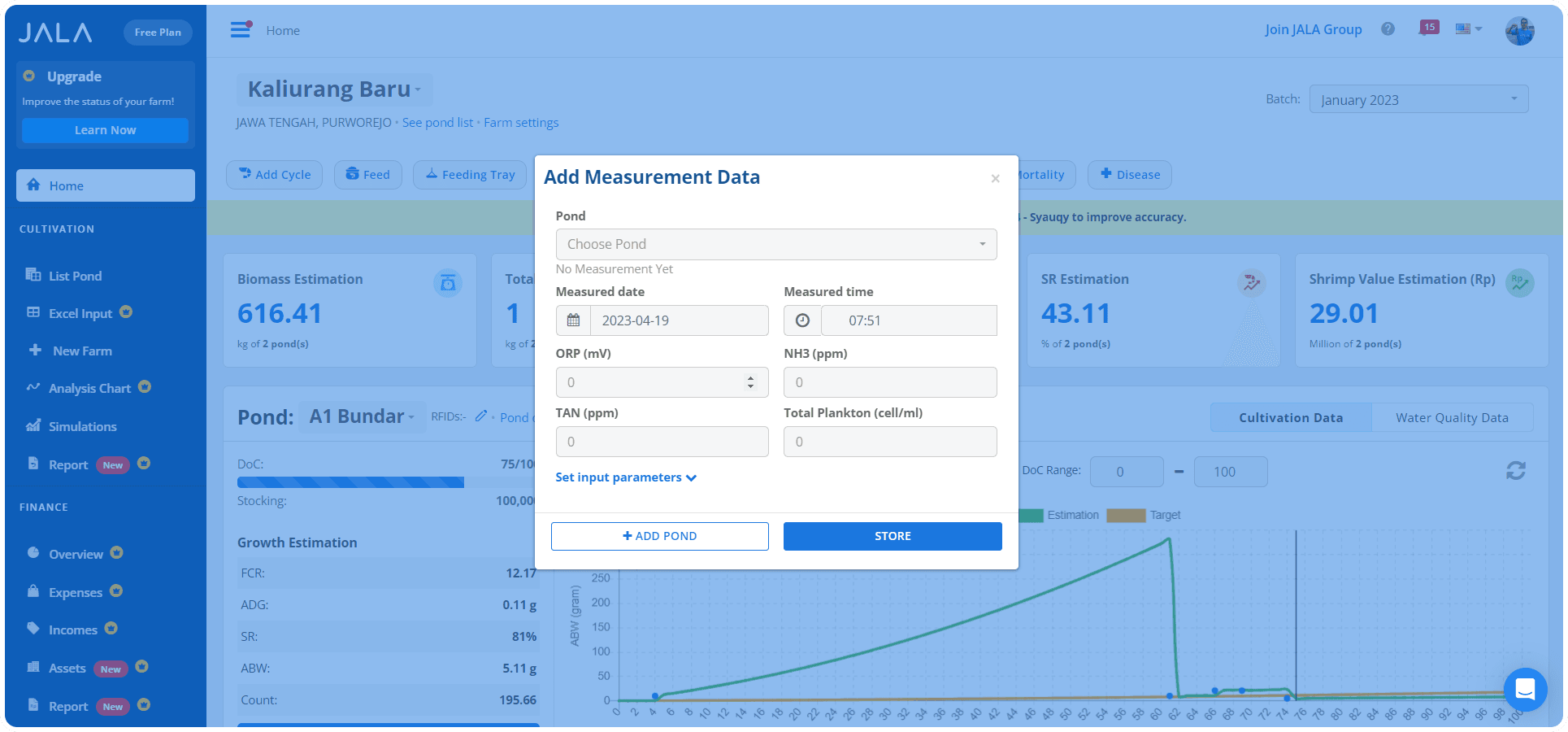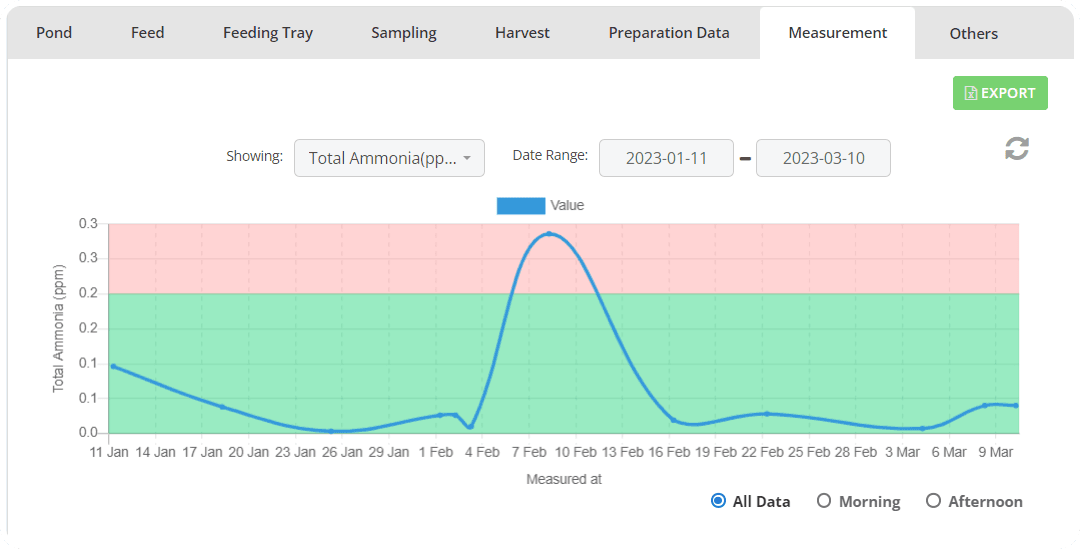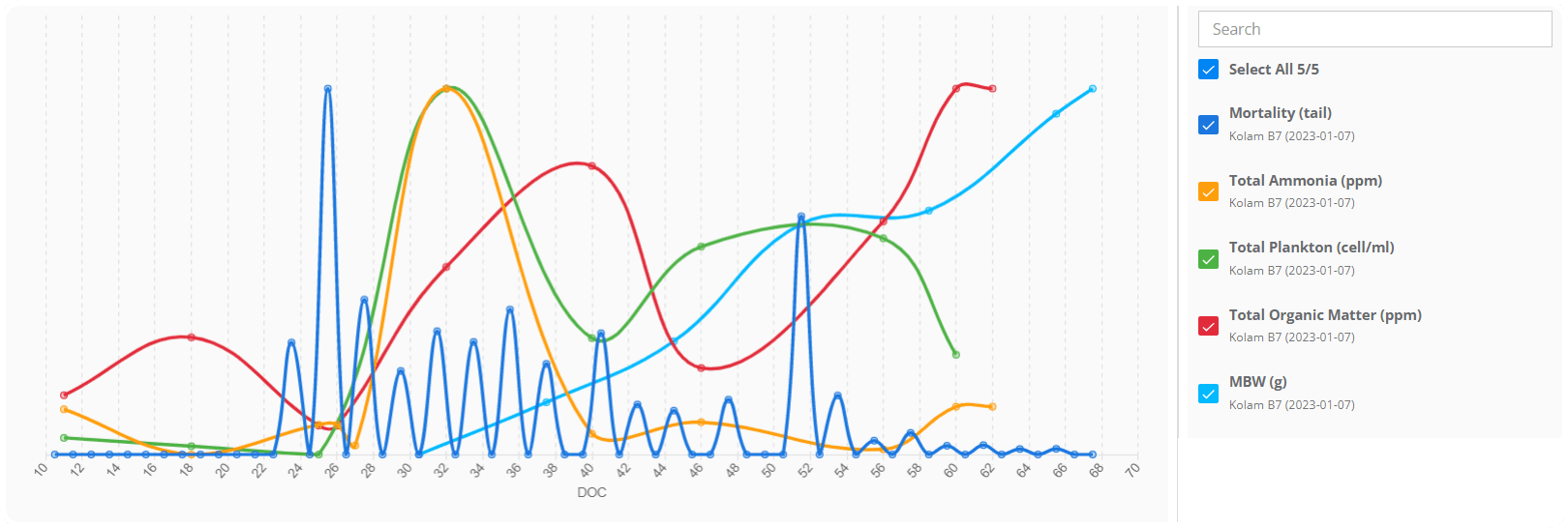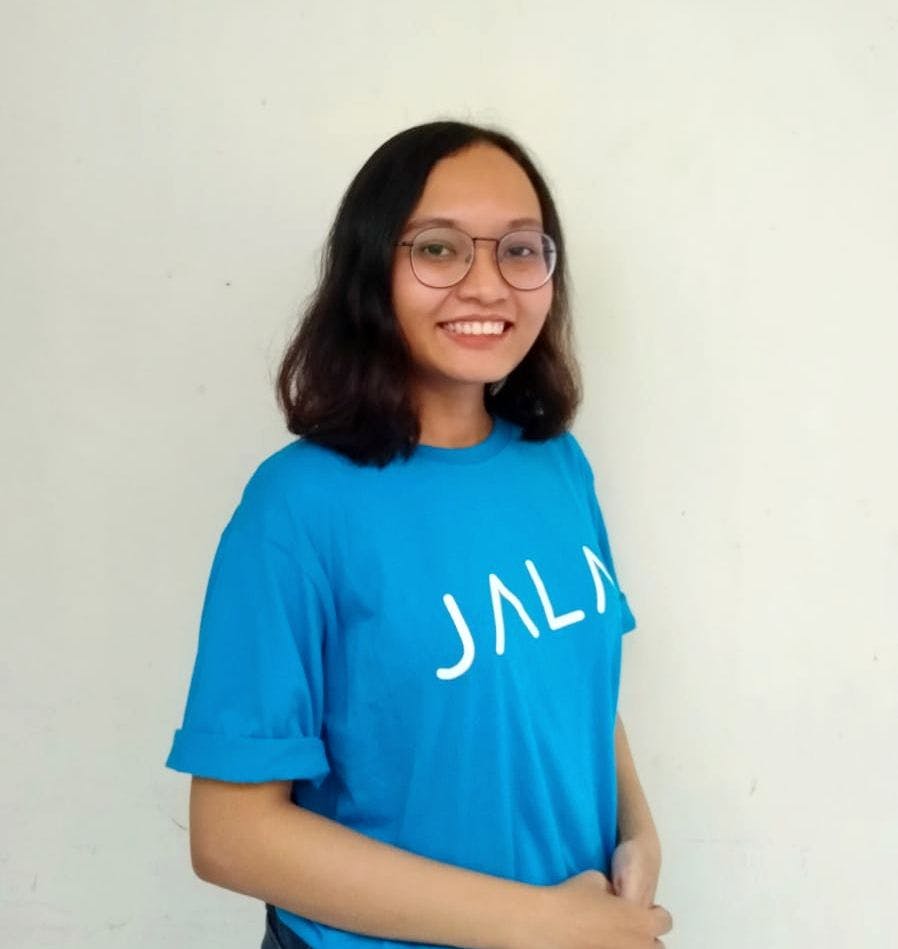
Various nutrient cycles occur in shrimp ponds every day as part of water quality and shrimp farm environment dynamics. These cycles bring consequences as the outcomes can be harmful and toxic to shrimp. Some examples of the nutrient cycle outcomes are nitrites, nitrates, ammonia, and hydrogen sulfide (H2S).
Besides compounds and the outcomes of nutrient cycles, toxins from phytoplankton are also harmful to shrimp.
The following are short explanations of the harmful potentials of ammonia, hydrogen sulfide, and plankton toxins to shrimp farms:
Ammonia
Ammonia is a byproduct of metabolism and the decomposition result of leftover feed, feces, and dead plankton. The accumulation of ammonia can reduce water quality, slow down the growth rate, increase oxygen consumption and ammonia ion excretion.
Free ammonia will be toxic if the amount exceeds the limit. Ammonia limit in each pond stocking density are as follows:
- Traditional: < 0,01 ppm
- Intensive: ≤ 0,1 ppm
- Super intensive: ≤ 0,05 ppm
Hydrogen sulfide (H2S)
The activity of sulfate-digesting bacteria from organic materials under anaerobic conditions, typically at the bottom of the pond or sludge, results in hydrogen sulfide (H2S). Hydrogen sulfide appears at the bottom of oxygen-deficient (anaerobic) ponds. Due to the abundance of sulfate ions, this condition occurs more frequently at the bottom of brackish water ponds rather than fresh water ones.
There are several causes behind the presence of hydrogen sulfide in ponds, namely:
- Sunlight doesn't reach the bottom of the pond
- Anaerobic conditions or the lack of oxygen at the bottom of the pond
- Organic matter in the pond that contributes to sedimentation at the bottom of the pond
Hydrogen sulfide limit in each pond stocking density are as follows:
- Intensive: ≤ 0,01 ppm
- Super intensive: ≤ 0,01 ppm
Hydrogen sulfide toxicity depends on pH, temperature, and DO. The lower these three parameters, the more harmful hydrogen sulfide toxicity.
Hydrogen sulfide level checking is conducted by testing for the presence of sulfate-digesting bacterial colonies. Typically black in color, these bacterial colonies produce anaerobic (doesn’t need oxygen) results from their activities.
Toxic compounds from plankton
Phytoplankton blooming is an occurrence where the phytoplankton population in a pond spikes. This occurrence is triggered by abundant nutrient conditions due to continuous feeding, rising temperatures, and high intensity of sunlight.
Phytoplankton blooming in ponds have several impacts, namely:
- Low water transparency
- Unavailability of DO in the bottom layer of the pond
- Accumulation of toxic compounds such as ammonia, nitrites, and hydrogen sulfide
Measuring toxic compounds level in ponds
As a precautionary measure, shrimp farmers must regularly measure toxic compound levels in ponds. Do not let the concentrations exceed the limit then disrupt shrimp growth and health until it negatively impacts cultivation results.
To measure the concentration of toxic compounds more accurately, a laboratory check is necessary. In response to this, JALA facilitates the measurement and checking of shrimp and water samples with a laboratory called JALA Labs.
Shrimp farmers can send water samples from their ponds to JALA Labs to learn about the toxic compounds concentration in their ponds. Measurement results can be obtained within 24 hours with high accuracy because JALA uses iiPCR technology to check samples.
Monitoring in JALA App
Each parameter has a maximum limit allowed. Once the levels of potentially toxic compounds such as ammonia and hydrogen sulfide are measured in the laboratory, record the results to observe the trend from time to time.
Record water quality measurement results

Monitor water quality trends through the chart presented, change to water quality parameters that will be monitored.

- The red area shows that the measurement result is out of the tolerated limit.
- Recording and monitoring water quality can also be performed through the mobile version of JALA App on your Android or iOS device.
Conduct an in-depth analysis through the analysis chart.

Connect a parameter with other parameters to see any potential of mutually influencing relations.
Water quality is crucial for shrimp farming. Make sure you measure and record it regularly to learn the trend over time, and keep it on the optimal range so shrimp can live and grow well. Record and monitor shrimp farming conditions from anywhere and anytime with JALA App. You can also download the app on Google Play Store or App Store to use it on your smartphone. It’s free!





